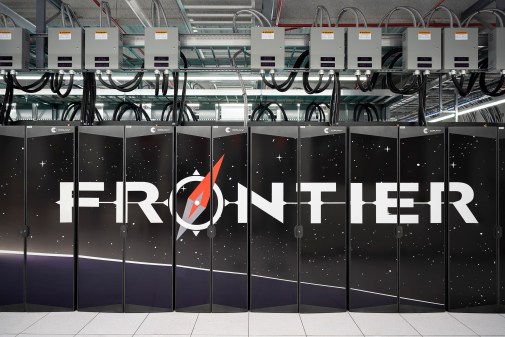Oak Ridge lab leader says further investment key to U.S. leadership in supercomputing

A supercomputing expert at the Oak Ridge National Laboratory has warned that investment is key to U.S. leadership in exascale computing and that scientific innovation could “stagnate” if it is not forthcoming.
“Without investment, essentially we are going to stagnate scientific innovation,” said Georgia Tourassi, responding to lawmakers’ questions on Wednesday. “We will stop innovating not only across basic sciences but across applied sciences.”
Tourassi is director of the National Center for Computational Sciences at Oak Ridge National Laboratory, which is a multiprogram science and technology laboratory sponsored by the U.S. Department of Energy. The research leader testified at a subcommittee hearing of the House Committee on Science, Space and Technology.
Oak Ridge is developing a new exascale computing system called Frontier, which is expected to be completed in October. It will compute eight times faster than the nation’s current most powerful supercomputer, Summit, which is also housed at the laboratory.
Congress has so far sought to fast-track development of exascale computing by appropriating $1 billion during fiscal 2021 to the Department of Energy’s Advanced Scientific Computing Research program, which is leading development of the Frontier exascale computing system. Exascale refers to a computing system that can perform at least one exaflop – or one quintillion (a billion-billion) calculations per second.
All told, the Department of Energy and the National Nuclear Security Administration within DOE have spent $460 million on their joint Exascale Computing Project to date. The hearing on Wednesday comes as the U.S. races to catch up with China in a supercomputing arms race.
“It is imperative for the United States to expand and enhance the national research computing ecosystem,” added Tourassi, giving evidence at the hearing. “The DOE has asked us to deliver Frontier one year earlier than planned, and we’re focusing our efforts on meeting that effort.”
Another exascale computing system will go to Argonne National Lab in 2022 and a third to Lawrence Livermore National Lab in 2023. But high-performance computing is also an investment priority for U.S. competitors China, Japan and the European Union.
Commenting on the U.S.’s development of supercomputing capabilities, Rep. Frank Lucas, R-Okla., the ranking member of the House Science Committee, said: “We know that our international competitors, like China, are outpacing us in basic research investment and are closing the gap in key computing focus areas like artificial intelligence and quantum sciences.
“Expanding our capacities in these fields requires a strategic effort with strong federal investment and active public-private partnerships,” he added.
Lucas is involved in crafting the Securing American Leadership in Science and Technology (SALSTA) Act that would roughly double ASCR’s funding over the next 10 years.
Lawmakers are also considering the Quantum User Expansion for Science and Technology (QUEST) Act, which would establish a DOE program for forming public-private partnerships around resource use and encourage increased participation in quantum information science.






